"DynaSoar" and "Spiral". Successes and failures of the first spaceplanes
It should be noted that all the early development of the USSR and the USA in the field of spaceplanes, although they did not lead to the emergence and operation of fundamentally new technology, were still not useless. With their help, specialists from a large number of research and design institutions were able to obtain the necessary experience, conduct a number of studies and experiments, and determine the future paths of development of space technology. On the basis of new technologies and developments, real samples of spaceplanes with the desired characteristics were soon created.
X-20 DynaSoar
The first full-fledged space plan project that had a chance to reach test flights is considered to be the American X-20 DynaSoar. Work on this program started in the fall of 1957 of the year - literally a few days after the launch of the first artificial satellite of the Earth, made in the USSR. The military and political leadership, as well as the heads of the aerospace industry of the United States, concluded that it was necessary to create their own space systems, including those suitable for military use.
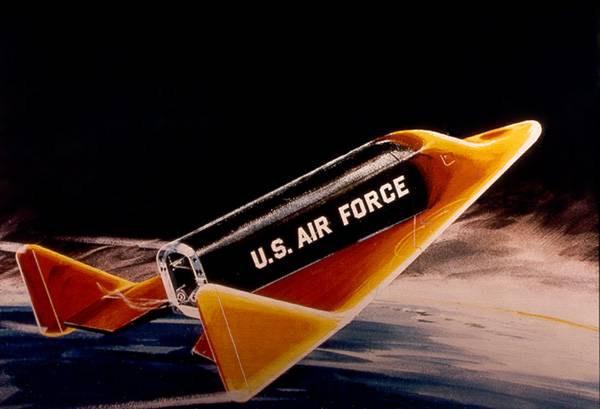
Space plan X-20 DynoSoar at the entrance to the atmosphere. NASA drawing
In mid-December, a conference devoted to the development of rocket and space technology was held at NACA. It discussed the three main types of spacecraft for the transport of people or goods: a capsule with the launch into orbit using a launch vehicle and return along a ballistic trajectory; orbiter of the Lifting Body type, capable of performing some maneuvers; as well as a full-fledged orbital space plane. Based on the results of the discussions, it was decided to develop the concepts of “ballistic” capsule and spaceplane.
At the end of the year, the US Air Force Research and Design Command launched a new program with the DynaSoar code (short for Dynamic Soaring - “dynamic planning”), within which it was planned to develop the spaceplane. The formation of requirements for the future spacecraft has begun, as well as the collection of applications for participation in the program. The Air Force received a total of more than a hundred proposals, but the program attracted only 10 companies, some of which decided to work together.
In the early spring of 1958, the Air Force got acquainted with a dozen preliminary projects of the DynaSoar system. Development companies used different approaches and implemented different concepts. At the same time, a significant part of the projects had a certain similarity. They envisaged the construction of a hypersonic rocket plane, which was supposed to be connected with a booster booster. Differences consisted in the design of the aircraft, the composition of the onboard systems and the architecture of the launch vehicle. The best options for the Air Force considered projects from groups of companies Boeing-Vought and Bell-Martin. They were developed.
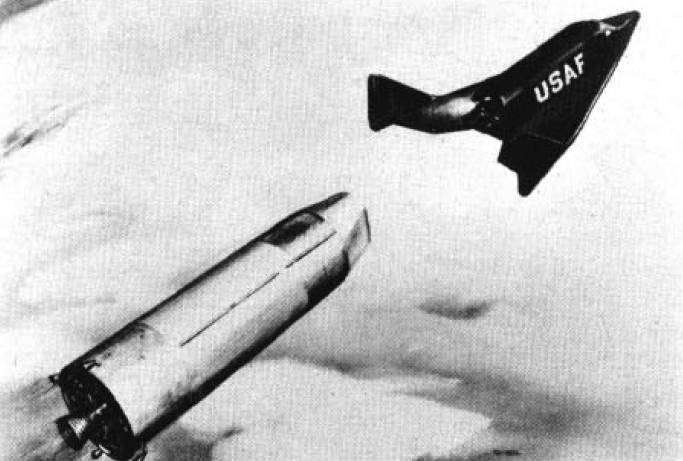
The separation of the launch vehicle and spaceplane. NASA drawing
In parallel with the search for the winners of the competition, the military were negotiating with the NACA: this organization was to ensure the holding of scientific and practical events. A corresponding agreement appeared in the late fall of 1958. After that, the Research Agency and companies aviation industries worked together, led by the air force. By this time, it was decided to carry out the program in several stages - from research to the construction and testing of the combat version of the space plan.
During 1959, the two groups of companies conducted various research projects. During this period, the customer several times changed the requirements for the spaceplane. In early November, the Air Force chose the winner of the competition. The best version of the project offered the company Boeing and Vought. It is curious that the latter, by this time, sharply reduced its participation in the project - it was responsible only for several units of the future apparatus. Also, the project attracted the company Martin, which was to develop the required launch vehicle.
The development of the future experienced spaceplane started at the very end of 1959 of the year. This stage of work was designated as Phase Alpha. The study of the appearance of the spaceplane with a working designation X-20 led to specific results. Thus, the design of the product was constantly changing and moved further and further away from the basic version. In parallel, the development of the construction and testing schedule was carried out. From a certain time, the customer and the developer planned to conduct two dozen test flights - and this is only during the first phases.
By the middle of 1961, the program participants determined the final appearance of the future rocket and space complex. In addition to the hypersonic spacecraft itself, it included a specially modified Titan IIIC launch vehicle. Instead of a stage with a payload on it, it was proposed to install a DynaSoar product. The three-stage rocket could also be equipped with a special fourth stage. This unit had to remain on the spaceplane, providing a solution to some problems.
The X-20 project involved the construction of a medium-sized spaceplane with a characteristic appearance. The optimally considered low-lying triangular wing, above which were the fuselage with a pointed nose fairing and a pair of lateral carinae. The glider was proposed to be made of heat-resistant steel alloys and covered with special ceramic panels. The principle of plating cooling due to internal radiators with liquid was also used. Inside the fuselage were placed single cockpit, as well as a liquid rocket engine and other necessary devices. The length of the device did not exceed 11 m, the wingspan - less than 6,5 m. Own weight - 5,16 t.
According to the proposals of that time, the X-20 cargo compartment could have placed guided missiles to attack targets in orbit or on Earth. In addition, the use of free-fall bombs was not excluded. As far as is known, the development of specialized space-to-space and space-to-earth missiles has not left the stage of preliminary research.
In September 1961, the Boeing company presented a full-size model of the spaceplane to the customer. His approval would open the road to the construction of a full-fledged prototype. Preparations for the tests were also conducted: NASA and the Air Force began selecting pilots to participate in future tests. A special group selected six pilots. They had to perform at least nine orbital flights.
However, these plans were not fulfilled. As early as October 1961, in connection with the emergence of competing space programs, a plan was proposed to reduce the cost of the X-20 DynaSoar project. This document provided for reducing the number of test flights and simplifying flight programs. Due to this, the cost of the tests was planned to be reduced to 920 million dollars and be completed by the 1967 year. It is curious that one of the parallel space programs in the same period was so harshly criticized that it was simply closed.
However, on this background, there were no reasons for joy. Already in February of the following year, the DynaSoar program was transferred to the research category, which was caused by problems in the development of a spaceplane and a rocket for it. In addition, there were difficulties in obtaining funding and organization of work. In October, a new version of the program’s schedule appeared, again providing for a reduction in spending.
In 1963, the DynaSoar project collided with a new competitor in the form of the Gemini spacecraft. The Pentagon compared the two developments and tried to determine which of them is of greater interest from a military point of view. This was followed by disputes in the military, against which rumors about the cessation of work on X-20 appeared. However, in the spring, the Boeing company received a new contract for the continuation of development work. In parallel, discussions continued on future funding and testing.
20 December 1963, Secretary of Defense Robert McNamara ordered that work on the DynaSoar program be discontinued in favor of the ASSET project with the appropriate redirection of funding. According to reports, at that time, 410 million dollars was spent on the DynaSoar program. To perform the first flight required comparable amounts and a few more years of work. However, the project did not allocate the necessary time and money.
"Spiral"
While American science was trying to create a space plane, Soviet specialists continued to develop ballistic-descent capsule ships and were very successful in this matter. However, just a few years later, work began on the creation of an orbital plane in our country. The domestic project of the aerospace system received the name "Spiral".
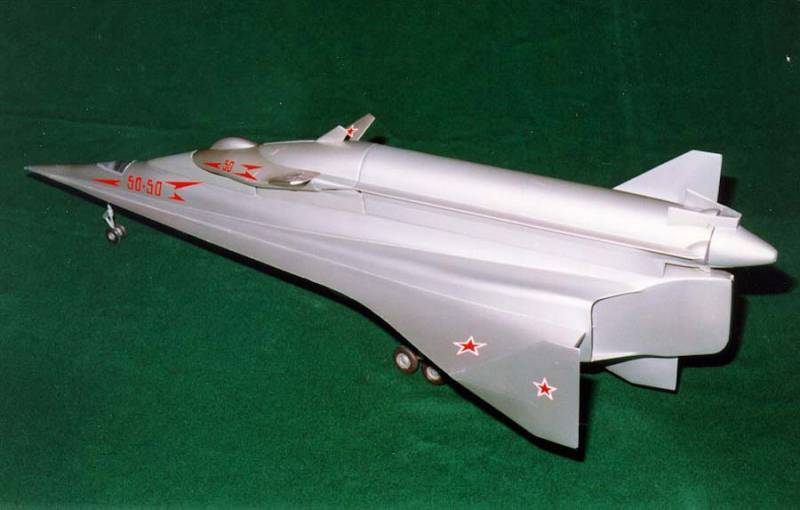
The layout of the aerospace system "Spiral" in the take-off configuration. Photo Epizodsspace.airbase.ru
It is known that one of the reasons for the emergence of the Spiral theme was the information about American plans to create space plans, namely, about the DynaSoar project. At the same time, it can be noted that the further development of astronautics could be conducted in different ways, including through the creation of spaceplanes. Thus, “Spiral”, although it was created with an eye on foreign designs, can be considered a completely own project, based on original ideas.
The ready-made concept of a system that combines the ideas of a rocket plane and a spacecraft was proposed in 1964, by the 30 Central Research Institute of the Air Force. This proposal interested the leaders of the aviation industry, and a corresponding order appeared in 1965. In accordance with him, OKB A.I. Mikoyan had to develop a project of a promising aerospace system with the code "Spiral". Work on this topic began in 1966 year, they were headed by the designer G.E. Lozino-Lozinsky.
30 th Central Research Institute carried out a significant part of the work, which seriously simplified the task of the Mikoyan Design Bureau. The specialists of the Institute formed the architecture of the future complex, and also determined its characteristics and capabilities. Thanks to this, the aircraft design engineers had to carry out only development work. This approach gave certain advantages. Thus, according to the plans of the mid-sixties, the first flight of the Spiral could take place as early as the beginning of the next decade.
The basis of the "Spiral" system was a special dispersal aircraft "50-50" of a characteristic appearance. He had to have a swept wing and a set of high-thrust air-jet engines. On the upper part of the machine, a platform was provided for the installation of an orbital space plane with an upper stage. According to the basic concept, the spreader had to climb to a height of 30 km and reach a speed of about M = 6. The total length of such a machine reached 38 m with a wingspan of 16,5 m. The take-off mass of the entire aerospace system is 52 t.
The payload of the 50-50 spreader was the so-called. orbital plane with a rocket booster. The spaceplane was proposed to be built according to the scheme with a carrying fuselage, in which the lower part of the machine was the plane of the wing. The fuselage itself had a triangular shape with a varying cross section. On the sides of the car there was a pair of planes falling apart. On the fuselage provided keel. The glider was proposed to be made of heat-resistant steels; sheeting received a special ceramic coating. According to calculations, at certain stages of the flight the nose of the fuselage had to warm up to 1600 ° C, which required appropriate protection.
The orbital plane “50” was proposed to be equipped with sustainer and steering engines. With a mass of 8 t he could carry a payload of at least 500 kg. The possibility of creating an orbital interceptor and reconnaissance aircraft was considered. In addition, there was a project of a space bomber that could carry 2 tons of cargo. At the expense of the spreader plane and the upper stage rocket block, the Spiral plane could climb into orbits with a height of at least 150 km.
By the end of the decade, the Mikoyan Design Bureau completed most of the theoretical work and prepared the technique for the first practical tests. In July, 1969, the launch of the experimental apparatus BOR-1 (“Unmanned orbital rocket plane, the first”) of a simplified design took place. Textolite glider on the scale of 1: 3 with the help of a modified rocket P-12 brought on a suborbital trajectory. The product burned in the atmosphere, but allowed to collect some data. In December of the same year, the BOR-2 apparatus was launched with a different design and configuration. In flight, the control system failed, and the prototype burned out.
From July 1970 to February 1972, three more BOR-2 prototype launches were performed. Two ended in success, one - a crash. In 1973 and 1974, two tests of advanced BOR-3 products took place. In both cases there were accidents for various reasons. Despite a number of accidents and shortcomings, tests of products of the BOR family gave a large amount of information.
Already after the launch of the BOR project, an order appeared to discontinue work on the topic “Spiral”. The country's leadership decided to throw the strength of the industry to other areas. However, already in 1974, the program was resumed, and soon new results were obtained. The latest achievement in the creation of an aerospace system "Spiral" can be considered an analogue aircraft "105.11", as well as orbiters BOR-4 and BOR-5.
The 105.11 / MiG-105 was a rough copy of the Spiral orbital plane, but could only fly in the atmosphere and at subsonic speed. This machine was intended for testing the decline and horizontal landing of spaceplanes. October 11 1976, the first flight of the "105.11". The car was taken to a predetermined height and course with the help of a Tu-95 carrier aircraft. Further, the prototype model was dropped, and he, having lowered, performed the landing. There were seven flights, after which the tests were stopped due to a breakdown of the prototype.
In the mid-seventies, the terms of reference for the creation of a promising reusable space system - the future complex "Energy-Buran". For several years, supporters of Spiral and Buran arguing with each other and trying to defend their side, but soon the question was resolved at the highest level. It was decided to minimize the theme "Spiral" in favor of the less daring, but promising "Buran". At the same time, a number of developments of the Mikoyan Design Bureau and related enterprises were planned to be used in the new project.
In the early eighties, in the interests of the Buran project, several launches of BOR orbiters with numbers from “4” to “6” took place. Their task was to check the thermal protection for the future of the space plane and the solution of other problems. All these experiments contributed to further work on the "Buran". It is important that several prototypes used in the two programs of aerospace systems have been preserved and are now in museums.
Successes and failures
Since the end of the fifties, two leading countries of the world, developing their space programs, have developed several bold projects of spaceplanes. However, for several reasons of one kind or another, these projects could not go too far. At best, it was only about testing apparatus-analogues.
The X-20 DynaSoar project was closed due to numerous technical, organizational and other problems that were based on the extreme complexity of the technical task. Designers and scientists managed to solve a number of critical issues, but these solutions were not tested in practice with the help of a full-fledged experienced space plane. However, a lot of ideas and technologies created for the first American space plane, later found use in new projects. The main result of all this was the Space Transportation System complex and its main element, the Space Shuttle reusable spacecraft.
History The Soviet project "Spiral" and its completion were different. It appeared as a kind of response to foreign development, but it developed differently. In addition, he was more successful: OKB A.I. Mikoyan conducted the necessary tests, including with suborbital flights. The main reason for the rejection of the "Spiral" was the emergence of alternative proposals and projects. At the same time, the achievements of the program immediately found a place in promising projects, as well as some experienced products. In fact, one project immediately “merged” into another and ensured its development.
It is well known that bold projects that give start to new directions cannot always give the desired results. However, with their help, experts collect the necessary data and gain valuable experience, which can then be used to create new projects. This is what becomes the main result of the programs that are not the most successful at first glance. However, in the case of DynaSoar and Spiral, the situation looks more complicated. Only one version of the spaceplane, created using their experience, has reached full operation - and he has already retired.
On the materials of the sites:
http://nasa.gov/
http://dtic.mil/
http://boeing.com/
http://astronautix.com/
http://buran.ru/
http://testpilot.ru/
http://mapsssr.ru/
http://epizodsspace.airbase.ru/
http://airwar.ru/
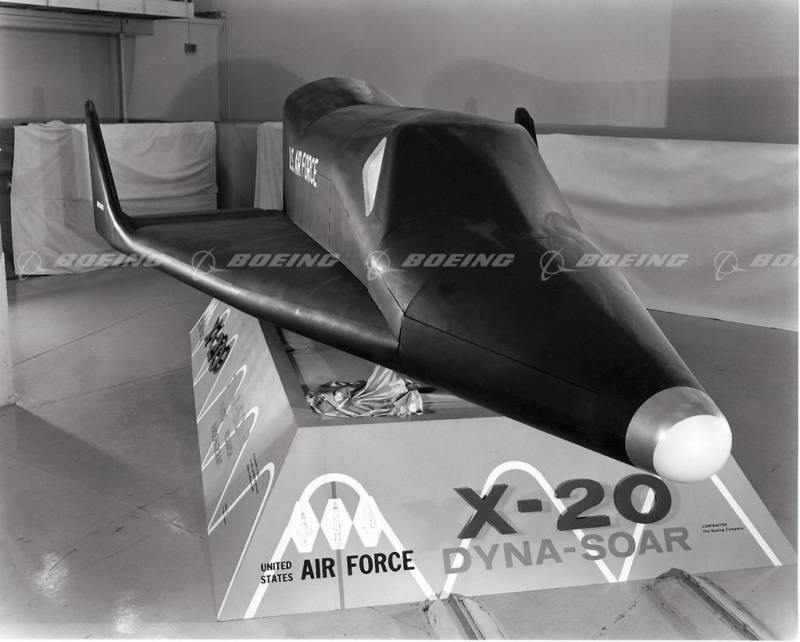
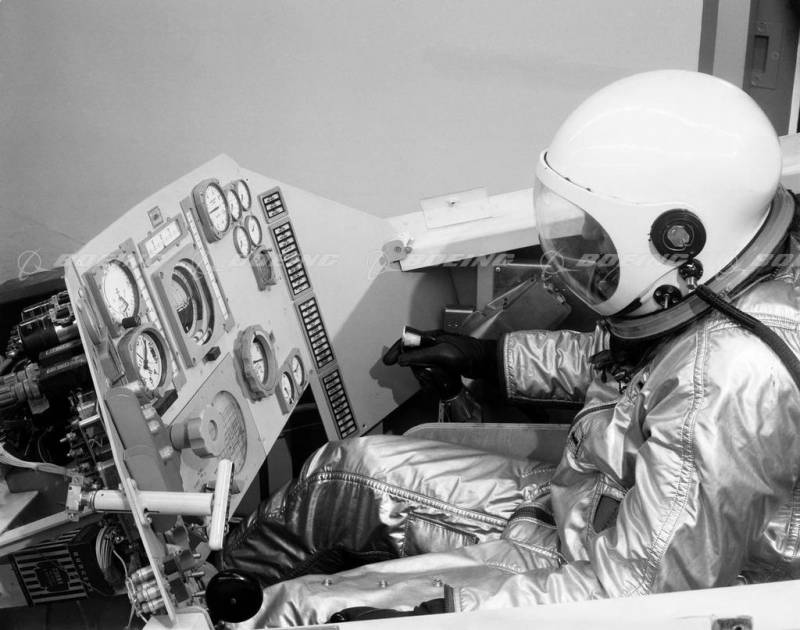
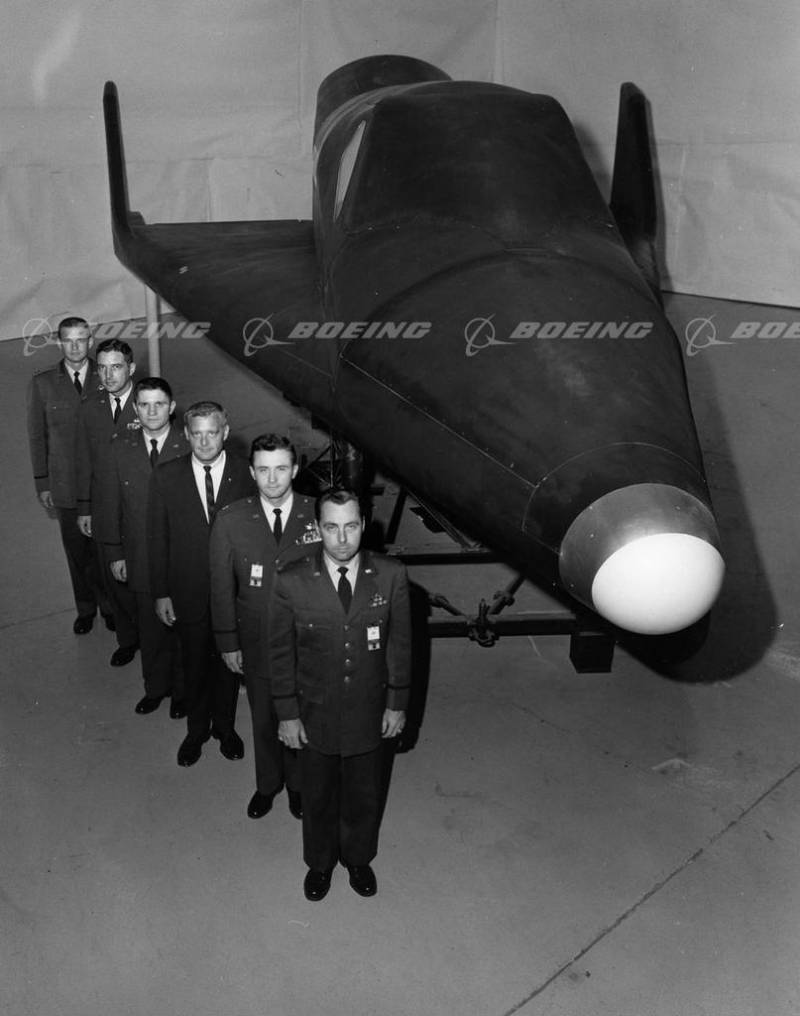
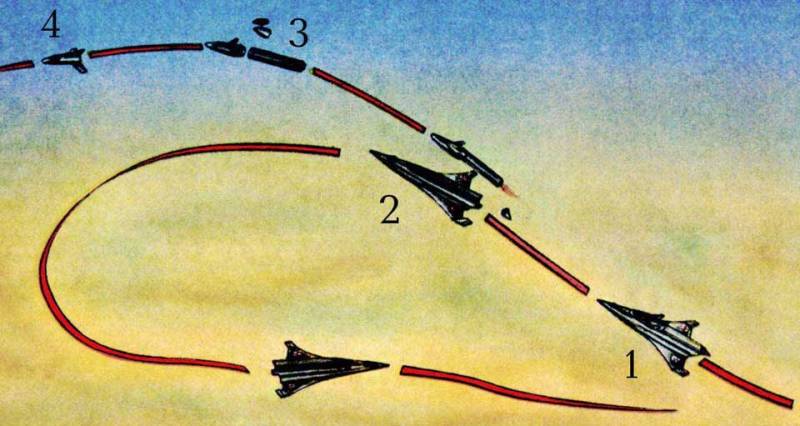
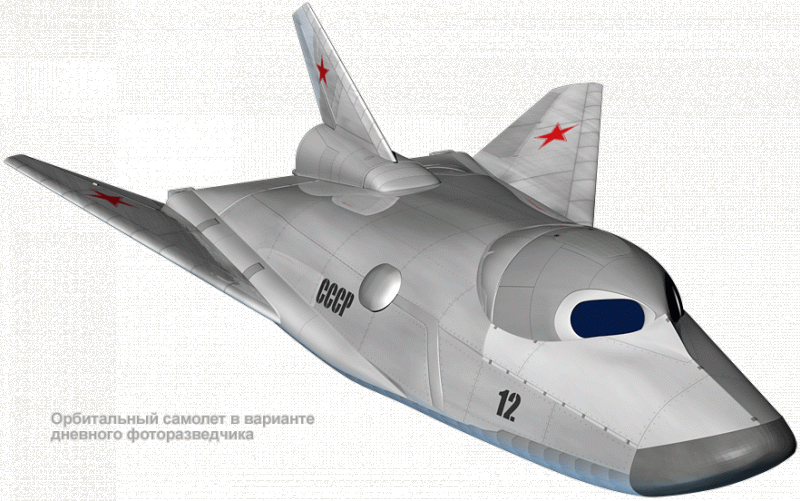
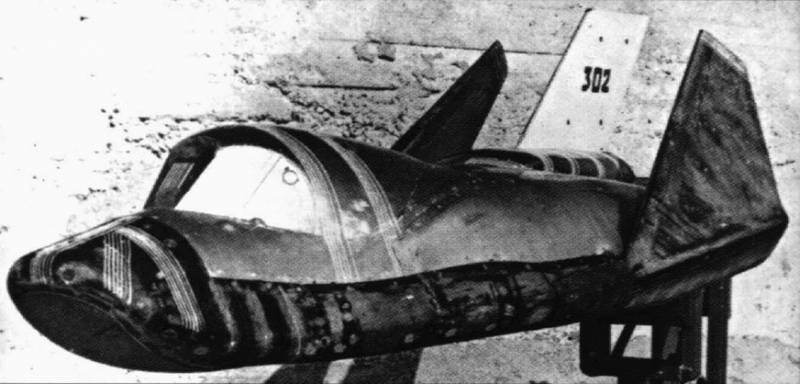
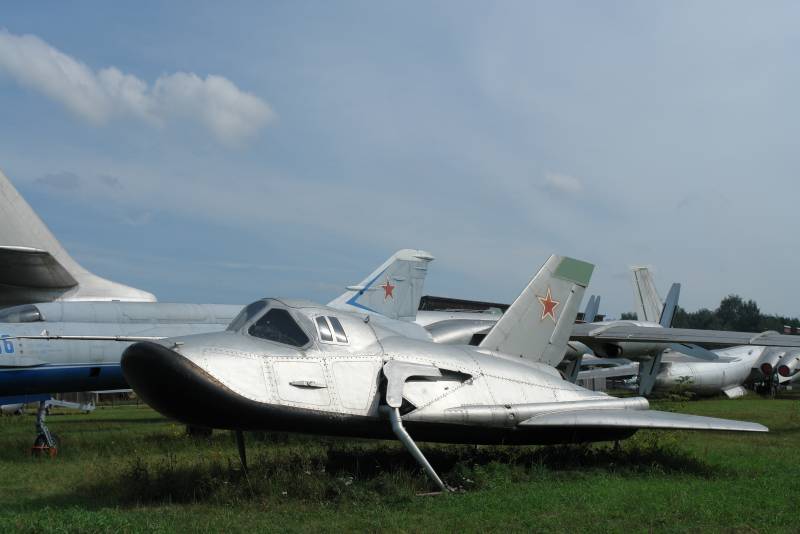
Information